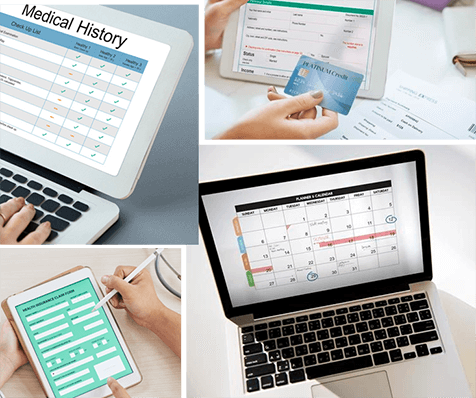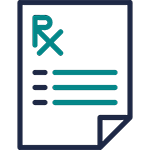The world of medical billing, once dominated by paper trails and manual entries, has seen a remarkable transformation over the decades. For healthcare providers, this evolution hasn’t just been about convenience; it’s been a journey towards accuracy, efficiency, and better patient care.
As we stand on the cusp of a new era, driven by technological advancements, it’s essential to reflect on how far we’ve come and where we’re headed. From handwritten invoices to sophisticated AI-driven systems, the landscape of medical billing has shifted in ways that were once the stuff of science fiction. In this article, we’ll explore this fascinating journey, addressing the concerns of healthcare providers and shedding light on the future of medical coding.
The Analog Era: Simplicity with Shortcomings
Before the digital age, medical billing was a straightforward affair. Healthcare providers would manually jot down services rendered, and these would be transcribed onto paper invoices. While this method had its charm, it was not without its challenges. Mistakes in transcription, lost or misplaced bills, and the sheer volume of paperwork made the process cumbersome. For healthcare providers, this meant more time spent on administrative tasks and less time for patient care.
The Introduction of Computers: A Game Changer
The late 20th century saw the introduction of computers into the medical billing process. Suddenly, records could be stored electronically, reducing the chances of loss or misplacement. Data entry became faster, and the ability to search and retrieve information revolutionized the billing process. This period marked a significant shift towards efficiency, but it was just the beginning.
The Rise of Specialized Software
With the digital foundation in place, the next logical step was the development of specialized medical billing software. These programs allowed for even faster data entry, automated calculations, and the generation of electronic invoices. They introduced features like error-checking, which drastically reduced the number of billing mistakes. For healthcare providers, this meant fewer denied claims and a smoother revenue cycle.
AI Medical Billing: The Next Frontier
The buzzword in today’s medical billing landscape is undoubtedly AI medical billing. Artificial Intelligence promises to take the efficiencies of the digital age to the next level. But what does this mean for healthcare providers?
Firstly, AI can analyze vast amounts of data at lightning speed. This capability means that billing can be done in real time, with AI systems checking for errors, inconsistencies, or potential fraud instantly. Such rapid checks can lead to faster approvals and payments.
Secondly, AI can predict trends. By analyzing past data, AI can forecast future billing patterns, helping healthcare providers prepare for financial ebbs and flows.
Is AI Taking Over Medical Coding?
A pressing concern for many is the future of medical coding in an AI-dominated landscape. The question everyone today has is Will AI take over medical coding? The answer is nuanced. While AI can assist in the coding process by suggesting codes based on the data input, the human element remains crucial. Medical coding requires a deep understanding of medical procedures, patient histories, and the nuances of healthcare provision. AI can provide tools to make the process more efficient, but human expertise is irreplaceable. However, we can see the perspective changing in the future.
The Integration of AI: A Seamless Blend
Another hot topic, how AI integrates with existing systems. The goal isn’t to replace but to enhance. Current medical billing software can be augmented with AI capabilities, ensuring a seamless transition. This integration means that healthcare providers won’t have to overhaul their systems but can instead upgrade them.
The Tangible Impact: Numbers Don’t Lie
To truly grasp the transformative power of technology in medical billing, here are some compelling statistics:
-
Reduction in Errors
Before the integration of specialized software, the error rate in manual medical billing was estimated to be around 28%. With the advent of digital systems, this number plummeted to below 5%. This drastic reduction translates to millions of dollars saved in denied or delayed claims.
-
Speed of Processing
A study revealed that electronic billing systems cut down the processing time by almost 50%. What used to take weeks, now takes days, ensuring that healthcare providers receive their dues faster.
-
Cost Savings
The American Medical Association found that electronic billing could save healthcare providers up to $15,000 annually per physician. These savings come from reduced paper costs, fewer staff hours dedicated to billing, and decreased errors leading to rework.
-
Increased Patient Satisfaction
With the integration of technology, patients now have access to clearer billing statements and online payment options. A survey indicated that 73% of patients found electronic billing more transparent and easier to navigate than traditional methods.
-
Adaptability to Change
With the ever-evolving landscape of medical procedures and insurance policies, AI-driven systems can update in real time. This adaptability ensures that healthcare providers are always compliant with the latest coding standards, reducing the risk of outdated or incorrect billing.
Embracing the Digital Shift
These statistics underscore the undeniable benefits of integrating technology into medical billing. For healthcare providers, it’s not just about convenience or efficiency; it’s about optimizing operations, enhancing patient trust, and ensuring financial stability. As we move forward, the fusion of human expertise with technological prowess will continue to shape the future of medical billing, promising even greater advancements and benefits.
The Future of Medical Billing and Coding
So, will medical billing and coding be replaced by AI? Not entirely. The future likely holds a collaborative environment where AI aids human coders, making their jobs easier and more efficient. The focus will shift from mundane data entry tasks to more complex problem-solving and decision-making roles.
In Conclusion
The evolution of medical billing is a testament to the power of technological advancement. From paper to AI, each step has brought about challenges and opportunities. For healthcare providers, staying informed and adaptable is key. Embracing the benefits of AI, while understanding its limitations, will ensure a future where medical billing is not just efficient but also effective in serving the needs of patients and providers.



















